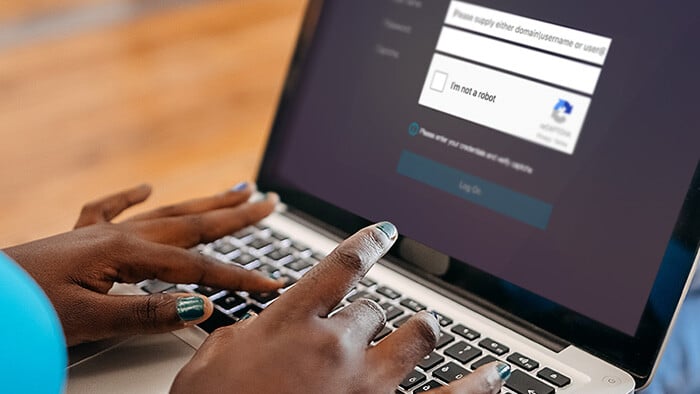What is cyber warfare?
Cyber warfare is a cyberattack or series of cyberattacks launched against a country or state with the aim of gaining a strategic or military advantage. Acts of cyber war typically involve infiltrating or damaging networks, sabotaging infrastructure, and disrupting the operations of organizations and institutions vital to the target nation’s interests.
Like conventional warfare, the main purpose of cyber warfare is to weaken the country by undermining social cohesion, political stability, and military-industrial capacity. Although the lines between cyber warfare, cybercrime, and cyberterrorism can be blurry, cyber warfare is not primarily motivated by financial gain and is perpetrated by state-affiliated actors.
Sometimes referred to as digital warfare, cyber warfare can include attacks on:
-
Civil infrastructure, such as power grids or traffic management systems
-
Financial institutions, such as banks and credit unions
-
Military facilities, contractors, and other national security institutions
-
Individual citizens of the target country
What is the impact of cyber warfare?
Cyber warfare has the potential to affect individuals in diverse and complex ways, including identity theft, financial loss, and even physical harm resulting from disruption to vital infrastructure and services. More broadly, concerted cyberattacks can cause chaos and undermine public trust, potentially even leading to civil unrest and political instability.
Here are five major impacts of cyber warfare:
-
Power failures
Disruption to the national electrical grid can harm the economy and affect public opinion.
-
Cybersecurity breaches
Hacking attacks may corrupt software systems or compromise sensitive government networks.
-
Data leaks
Large-scale data breaches can impact a range of personally identifiable information, such as medical records or banking details.
-
Military or industrial sabotage
Direct attacks on a country’s national security or economic infrastructure degrade military or industrial capabilities.
-
Communications disruption
Telephone, mobile, email, or other digital communications can be shut down, intercepted, or otherwise tampered with.
Examples of cyber warfare attack methods
No two cyber warfare campaigns are identical, and the list of potential attack vectors is endless. But, specific cyber warfare operations tend to fall within one of the following attack methods:
-
 Malware attacks
Malware attacks
Communications blackouts or significant power grid or public utilities shut-downs can be caused by malware such as viruses and worms that are used as cyberweapons to attack critical infrastructure networks or industrial control systems.
-
 Ransomware
Ransomware
In a cyber warfare context, the ransomware subset of malware falls into a category of its own. By holding critical networks or data hostage, ransomware causes disruption in the target country and can also finance future cyber warfare operations.
-
 Distributed Denial-of-Service (DoS) attacks
Distributed Denial-of-Service (DoS) attacks
The use of botnets to bombard websites with fake requests is known as a Distributed Denial-of-Service (DoS) attack, and it’s designed to overwhelm systems and take critical operations or services offline.
-
 Espionage
Espionage
When gathering information is the key objective, spear-phishing, brute-force attacks, password cracking, and other digital espionage techniques may be employed to hack into supposedly secured networks, eavesdrop using spyware, cause data breaches, or blackmail government organizations and high-profile individuals.
-
 Subversion
Subversion
The use of digital propaganda, fake news, and other forms of disinformation to pollute the target country’s media ecosystem can be viewed as a component of cyber warfare — particularly when done in concert with other efforts to erode public trust in authorities and institutions and provoke social discord.
-
 Inside jobs
Inside jobs
Some of the most damaging cyber attacks can come from within. Hacktivists, whistleblowers, and other domestic leakers can divulge sensitive information anonymously on the dark web, unwittingly or intentionally aiding external attacks on a country’s national security.
Cyber warfare operations
Cyber warfare operations are offensive or defensive cyber activities carried out to protect national interests or harm another nation-state. They are usually undertaken by military task forces or government-affiliated hacking groups.
Here are some high-profile examples of cyber warfare operations:
-
Stuxnet (2010) was the first cyber warfare tool intended to cause physical harm to infrastructure. Stuxnet was a malware cyberweapon that targeted Iranian nuclear centrifuges and caused substantial disruption to the country’s nuclear program.
-
Cyber espionage by the United States (2013) against countries such as Brazil and Germany was revealed in documents leaked by Edward Snowden.
-
The Sony Pictures hack (2014) saw a state-affiliated hacking group from North Korea leak confidential documents belonging to Sony Pictures Entertainment. The attack was in response to the release of “The Interview,” a Hollywood film portraying North Korea in an unfavorable light.
-
Wannacry (2017) was a ransomware attack originating from North Korea. Wannacry exploited a Windows vulnerability to revoke data access across hundreds of thousands of PCs in 150 countries.
-
Blackouts in Mumbai, India (2020) are thought to have been part of a Chinese cyberattack conducted as a “warning” against India.
-
The Russian invasion of Ukraine (2022-present) has seen an unprecedented escalation in digital warfare. As well as the ongoing physical conflict, the use of wiper malware targeting Ukrainian organizations has been widespread.
 Several high-profile cyberwarfare operations have been carried out in recent years
Several high-profile cyberwarfare operations have been carried out in recent years
How do countries defend themselves against cyber warfare?
To protect against cyber warfare, governments and high-profile organizations invest in advanced cybersecurity tools, processes, policies, and highly specialized teams dedicated to securing devices and networks.
Defenses include antivirus software, endpoint protection, VPNs, and other data encryption technology. Another tool is intelligence research conducted by cybersecurity companies and intelligence agencies to identify potential attack vectors and new threat trends.
Governments also use proactive practices such as penetration testing and ethical hacking to stay ahead of adversaries. Ethical hacking involves authorized hacker types simulating what might happen in the event of a real attack to highlight vulnerabilities that can then be addressed and fixed. Penetration testing is similar, but it’s performed to a more specific brief and scope.
In the US, a regular Hack the Pentagon exercise sees the Department of Defense and HackerOne work together to mobilize freelance and amateur ethical hackers as part of a crowdsourced national security initiative. This type of program designed to identify and fix bugs in the department’s public websites has also been adopted by the UK’s Ministry of Defence and Singapore’s Government Technology Agency.
How to protect your devices against cyber warfare
Individuals are not generally the primary target of cyber warfare, but that doesn’t mean they can’t be affected. As well as potential disruption to services and utilities you rely on, your personal information could be compromised in a data leak, or your devices caught up in the collateral damage of large-scale, indiscriminate malware attacks.
Here’s how to keep your data and devices safe and secure:
Download cybersecurity software
You can’t do much about your government’s security measures, but you can protect your own devices. There are a range of security tools available to help you stay safe online, including antivirus software, firewalls, VPNs, and data-breach monitoring tools.

If this sounds overwhelming, don’t panic. With all-in-one security solutions like Avast One you can defend all your devices against a wide range of cyber threats — including previously unencountered malware.
Review the security settings on your accounts
Tighten up security on your social media, email, banking, gaming, and other accounts by restricting publicly visible information and enabling two-factor authentication to log in. Then, review all the available settings and features — any extra layers of protection you can add will help to protect your privacy and your data.
Regularly update your software
Threats are continually evolving. Just as hackers are constantly finding new zero-day vulnerabilities to exploit, security engineers race to discover them first and patch them up. That’s why it’s essential to regularly update your software, applications, and operating systems, to benefit from all the latest security patches. Where possible, allow automatic updates to ensure you're always up to date.
Back up your data
As well as getting stolen or leaked, your personal and sensitive information is at risk of being corrupted or wiped as a result of hacking or malware attacks. But, by cloning your hard drive or using other methods to back up your data, you’ll have peace of mind that even in the worst-case scenario, you’ll be able to recover lost files, photos, and data.
Learn more about cyber threats
How do you spot a phishing attack? What are the signs that your laptop has a virus? Is public Wi-Fi safe? Unless you’re already an online security expert, you’ll probably benefit from learning more about cybersecurity and potential threats. Keeping you and your family safe from harm online requires a basic understanding of the dos and don’ts of cybersecurity.
Protect yourself and your family with Avast
The best line of defense against advanced cyber threats is a comprehensive security app with a range of features designed to protect you and your family.
Built around award-winninganti-malware software, Avast One incorporates a full suite of security and privacy tools to protect your home network and help shield you from malware, phishing emails, malicious websites, and hacking attacks. Fortify your devices for free today.



 Several high-profile cyberwarfare operations have been carried out in recent years
Several high-profile cyberwarfare operations have been carried out in recent years











